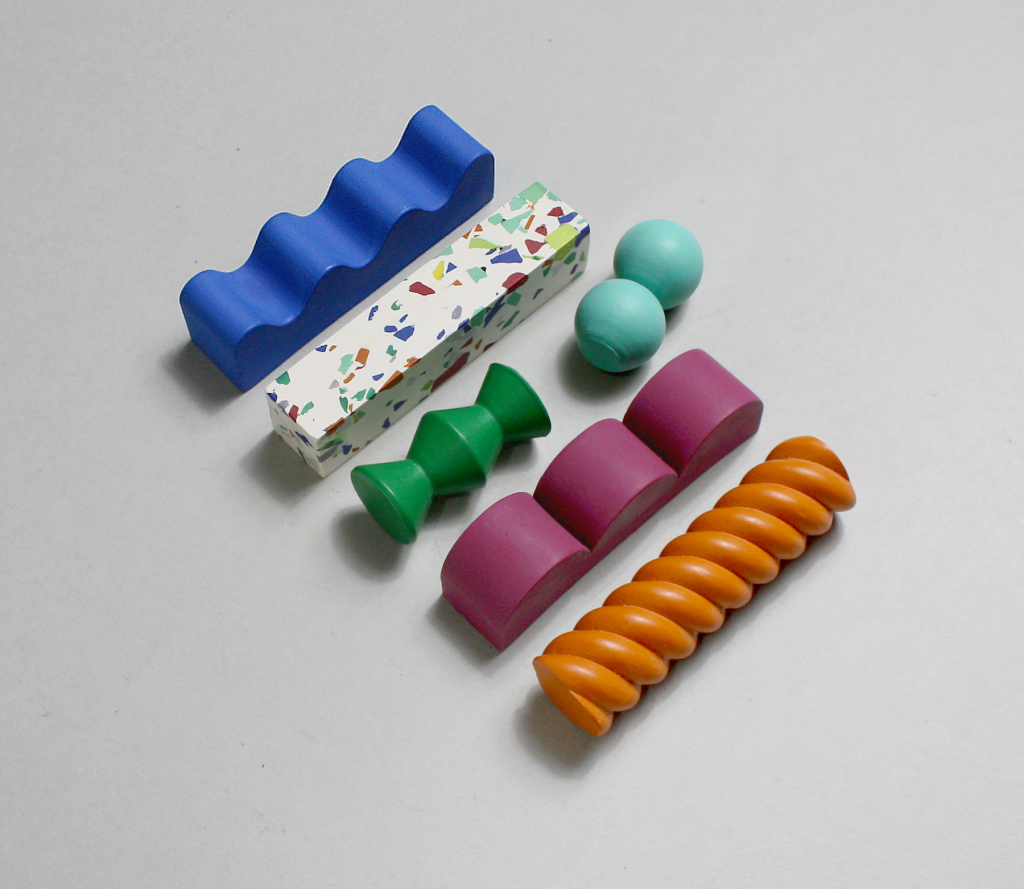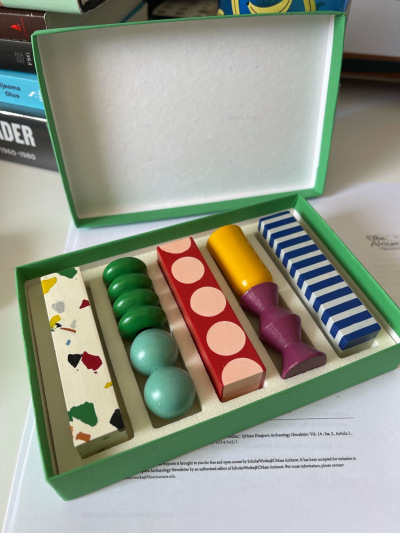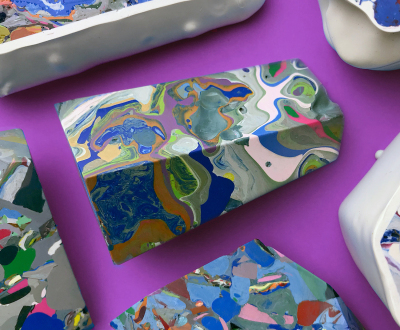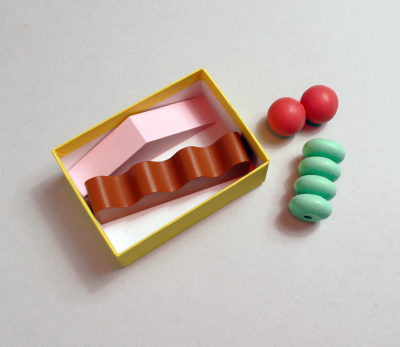 Keetra Dean Dixon/Retoolings
Keetra Dean Dixon/Retoolings
When you order crayons from Retoolings, what arrives is a little box that will fill you with wonder. Nestled inside is a set of handmade wax objects in an array of shapes and colors. The set that landed on my doorstep earlier this year had major Memphis Group vibes, with corkscrew, wave, scallop, ball, and hourglass forms in shades of tangerine, cobalt, fuchsia, and emerald, a peppy palette also used to speckle a slab of purt white wax, tying the whole group together. Polished to a shine, edges pristine, the crayons posed an immediate dilemma: to color or not to color?
That conundrum—whether to slowly destroy the crayons by using them, or to put them on display instead—is precisely what led artist Keetra Dean Dixon to begin making crayons for grown-ups. A graphic designer by training, Dixon has long been interested in experiential design propositions that disrupt public or semipublic rituals. Her graduate thesis at Cranbrook, for example, involved what she called “the tricky photo booth,” which produced photo strips with patterning and individualized messages that Dixon crafted behind the scenes in a gesture that could have been creepy, she admits, but was received with surprise and joy. From there, she helped to develop an R&D lab at an architecture firm, where she was tasked with exploring emerging forms of technology as the lab’s “experiential orchestrator.”
 Keetra Dean Dixon/Retoolings
Keetra Dean Dixon/Retoolings
Around 2007, Dixon and her husband, artist JK Keller, received an invitation to contribute a typographic work to a group exhibition. Through some playful experimentation inspired by Keller’s creative coding practice, the pair began layering wax to create sculptures that resembled massive jawbreakers or geodes, with a carved word or phrase hidden at the center. After making a number of large-scale “rocks,” some weighing as much as 200 pounds, Dixon and Keller offered some to friends with explicit permission to cut them up and use them as material for whatever projects they’d like. But no one wanted to compromise the integrity of the sculptures, Dixon told me, not even to create something new.
That refusal made her wonder: “How finely crafted does an object need to be to make someone preserve it rather than use it?” Smaller objects with a clear utility would force the question. Dixon hit upon the idea of applying her significant knowledge of wax as a material—how it behaves, what it affords—to the task of producing functional crayons, which she first tested in 2015. Having never before made crayons, Dixon consciously adopted the same kind of approach that she hopes her objects engender in their users: an embrace of the beginner’s mind, a Buddhist principle that sees value in the openness and creativity that often comes from lack of expertise.
 Keetra Dean Dixon/Retoolings
Keetra Dean Dixon/Retoolings
With an R&D spirit and help from culinary how-to videos, Dixon perfected her formula and processes over several years and now produces boxed sets of wax crayons in limited-edition runs, priced from $29 to $52 and sold on the Retoolings website. Most of her crayons begin with 3D-printed models that eventually become custom-made silicone molds, which she fills with melted paraffin, soy, and archival wax mixed with just enough acrylic pigment to create “a satisfying mark,” in Dixon’s words. She also makes slab-built crayons through a lapidary process, using a band saw to cut precisely squared crayons from a large block of poured and layered wax. The finished crayons are submerged in an acid bath and then polished, resulting in a smooth, slightly glossy finish.
The crayons’ sophisticated sensibility and impeccable crafting betray some of the deep thinking that has guided Dixon’s experiments. For most adults, crayons ooze nostalgia, taking us straight back to childhood, from our earliest scribbles to our attempts to translate 3D reality into a 2D space. With her “retooled” crayons, Dixon evokes that formative brain space but updates it for a mature audience. She talks with infectious enthusiasm about the wide range of sources that she draws upon, conceptual and aesthetic references as far flung as developmental toys called Froebel blocks, the Whole Earth Catalog, Yayoi Kusama, Bridget Riley, Archigram, Josef and Anni Albers, Madeline Gins and Shusaku Arakawa, and Ettore Sottsass, founder of the Memphis Group.
 Keetra Dean Dixon/Retoolings
Keetra Dean Dixon/Retoolings
For Dixon, crayons are just the beginning. She wants to elevate the humblest tools—ballpoint pens, glue sticks, erasers—beyond the status of desk-drawer banality, transforming them into prompts for discussion and play. At the same time, she’s still testing the capabilities of wax, modeling new crayon shapes out of wax itself and trying to capture the delicacy of a wax ribbon in a cast form. Dixon sees this as experimentation, but it’s also good business: Whether you wear her crayons down to the nubs or put them on a shelf, you’re going to want more.
Source link : https://www.artnews.com/art-news/artists/keetra-dean-dixon-retoolings-crayons-1234603723












